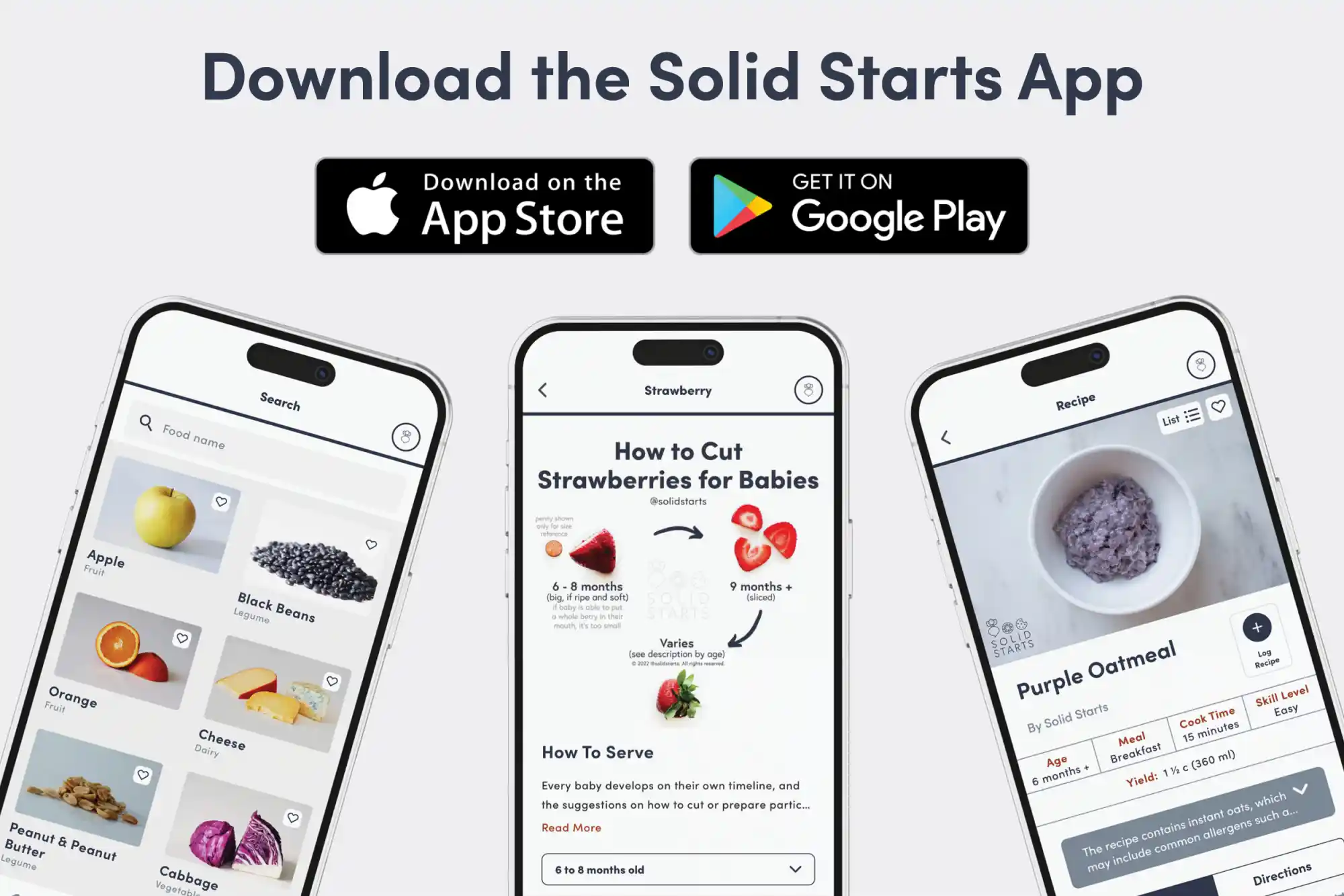Access our First Foods® Database in the Solid Starts App.
Learn moreChayote
Fruit
Age Suggestion
6 months
Iron-Rich
No
Common Allergen
No

When can babies have chayote?
Chayote may be introduced as soon as baby is ready to start solids, which is generally around 6 months of age.
Chayote is a crisp, juicy squash with cream- or green-colored rind and bright white flesh. Like most gourds, the plant originated in Central America, where Spanish colonizers adopted the Nahuatl word chayohtli for the squash, which were capable of lasting in storage during long journeys at sea. This hardiness may be how chayote proliferated worldwide, where the squash is known as choko, chou chou, christophene, labu siam, mirliton, perulero, and vegetable pear, among other names.
How do you serve chayote to babies?
Every baby develops on their own timeline, and the suggestions on how to cut or prepare particular foods are generalizations for a broad audience.
6 months old +:
Offer well-cooked, mashed chayote for baby to eat with their hands or from a pre-loaded spoon, or serve large wedges of cooked, soft chayote for baby to munch on as finger food. If baby takes a big bite, give baby a moment to either chew and swallow it or spit it out, keeping your fingers out of baby’s mouth. You can help by putting your hand on baby’s back and gently leaning the baby forward to allow gravity to help pull the piece of food towards the front of the mouth for baby to more easily spit out.
9 months old +:
Serve bite-sized pieces of well-cooked chayote for baby to pick up with their developing pincer grasp (where the thumb and pointer finger meet). Alternatively, continue to offer large sections or slices of well-cooked chayote or mash and serve on a pre-loaded utensil. If you’d like to serve raw chayote, you can, just slice very thinly (or grate) to reduce the choking risk, as raw chayote can be quite challenging to chew.
18 months old +:
Offer bite-sized pieces of cooked, soft chayote along with a fork to encourage utensil practice. Help show how it’s done by pre-loading the fork for the child to pick up independently or try spearing the chayote while making a sound (boink!) to make it fun to use the utensil. To serve chayote raw, continue to serve it grated or in thin slices.
24 months old +:
Sometime after the 2nd birthday, most typically developing toddlers will be ready for thicker slices of raw chayote. The child should be consistently taking accurate-sized bites, moving the food to the side of the mouth, and chewing thoroughly. They should also be able to sit calmly while eating. As always, stay within an arm’s reach during mealtime and refrain from offering apples in strollers or car seats.


For more information on how to cut food for babies, visit our page on Food Sizes & Shapes.
Videos
Is chayote a choking hazard for babies?
Yes. Raw chayote is firm, challenging to chew, and can be slippery, qualities that increase the risk of choking. To reduce the risk, prepare and serve chayote in an age-appropriate way as described in the How to Serve section. As always, make sure you create a safe eating environment and stay within an arm’s reach of baby during meals.
Learn the signs of choking and gagging and more about choking first aid in our free guides, Infant Rescue and Toddler Rescue.
Is chayote a common allergen?
No. Allergies to chayote are rare, though it’s not uncommon to get an itchy rash on the hands after handling vegetables in the squash family, especially when raw. When peeled, chayote secretes a milky substance that can irritate the skin. To minimize any reaction, wear gloves or run the chayote under cool water while peeling. This substance does not generally cause any issue after cooking the chayote, so the risk of reaction while eating is low. Consider applying a barrier ointment, such as pure white petroleum jelly, around baby’s mouth before eating, and wash baby’s face and hands after eating.
As you would when introducing any new food, start by offering a small quantity on its own for the first few servings. If there is no adverse reaction, gradually increase the quantity over future meals.
Is chayote healthy for babies?
Yes. Chayote contains plenty of zinc for a robust metabolism, folate for neurological development, vitamin B6 for brain development, and vitamin C for healthy skin and immunity. It also offers trace amounts of fiber, vitamin A, calcium, copper, and iron—essential nutrients to help babies thrive. Like other members of the squash family, chayote contains powerful antioxidants, which may reduce inflammation and regulate blood-sugar levels.
★ Tip: When shopping for chayote, look for squash that is firm with no bruises or dark spots. The squash should feel compact, but not rock hard—like a pear that has started to ripen.
What are some great first foods for babies?
There are many wonderful options. Look for foods that are easy for baby to feed to themselves, that are low in choking risk, and that offer nutrients babies need, such as iron. A few of our favorite first foods include cooked broccoli, oatmeal, and mango pits.
Does baby need a high chair?
While a high chair can help create a safe eating environment, there are alternative ways for baby to eat safely, such as holding the child on your lap or sitting together on the floor. For more information, see our article on high chairs.
Our Team
Written by
Expert Tips Delivered to Your Inbox
Sign up for weekly tips, recipes and more!
Copyright © 2025 • Solid Starts Inc







